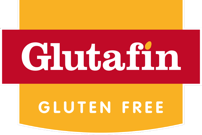
If you or someone you love has been recently diagnosed with coeliac disease, you could be eligible to receive gluten free foods on prescription. Simply select your country of residence, and, if you live in England, fill in your postcode to check if your area is prescribing.
Your country is prescribing gluten free foods*. Request your Glutafin Taster Box by clicking the button below to sign up.
* Please note: local policies are constantly updated, and issuing a prescription is at the discretion of your GP.

The Glutafin Gluten Free Fibre Loaf is our highest fibre loaf yet, in fact it’s the highest fibre loaf available on prescription – providing you with 2.6g of fibre per slice! But what is gluten free fibre and why do we need to eat it? How much we try to eat and what other foods can help us to achieve this? Read on to find out more about this staple nutrient…
The term ‘fibre’ describes plant material that humans are not able to absorb or digest. There are two kinds of dietary fibre, soluble and insoluble. Both are important for maintaining health and they are often found in combination within the same foods.
Soluble fibre dissolves in water, forming a ‘gel’ in the gut which helps to keep stools soft. Gluten-free sources of soluble fibre include gluten-free oats, pulses (such as baked beans and chick peas), and some fruits and vegetables.
Insoluble fibre does not dissolve in water. Instead it passes through the digestive system almost intact, helping to bulk out stools. Gluten-free sources of insoluble fibre include gluten-free whole grains (e.g. maize, buckwheat, quinoa and millet), dried fruit, many vegetables and fruit skins, and nuts and seeds (including the linseeds and sunflower seeds we use in our high fibre loaf).
The average adult intake of fibre in the UK is approximately 18g per day, however the latest government guidelines on fibre recommend that we should aim to eat much more, around 30g per day (less for children)*. This is in overall recommendation and includes all types of fibre. Research suggests that those following a gluten-free diet often consume less fibre by removing a number of cereal-based foods from their diet, therefore it’s particularly important for those with coeliac disease to consider ways to ‘boost’ their fibre intake wherever possible.
If your usual diet is low in gluten free fibre, aim to increase your fibre intake gradually as a sudden increase in fibre may cause abdominal discomfort.
*Scientific Advisory Committee on Nutrition (2015). Carbohydrates and Health Report.
If you or someone you love has been recently diagnosed with coeliac disease, you could be eligible to receive gluten free foods on prescription. Simply select your country of residence, and, if you live in England, fill in your postcode to check if your area is prescribing.
Your country is prescribing gluten free foods*. Request your Glutafin Taster Box by clicking the button below to sign up.
* Please note: local policies are constantly updated, and issuing a prescription is at the discretion of your GP.
Share this now: